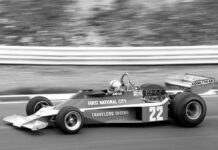With the dust settling (literally, it’s dry out here) at the Monterey auctions, we’re looking at nearly $400M in total sales, including over 150 vehicles sold for over $1M and the fifth most expensive car ever sold at auction—the 1967 Ferrari 412P—for $30.255M. Significant, sure, but that sultry piece of rolling sculpture just didn’t bring much excitement or bidding on the block, and it sold at about where everybody expected it to. Instead, there’s another piece of Ferrari racing lore that’s got people buzzing over the past three days. Something a little…rougher. It’s a 500 Mondial from 1954 (or at least it used to be), and it brought $1.875M.

That’s 17% over its high estimate. Bent, burnt, incomplete and ugly, is this another case of barn find mystique and emotions over financial sense? Or, is it what publisher of the Hagerty Price Guide Dave Kinney calls “a savvy buy?” Those questions are enough to make it our Sale of the Week for Monterey 2023.
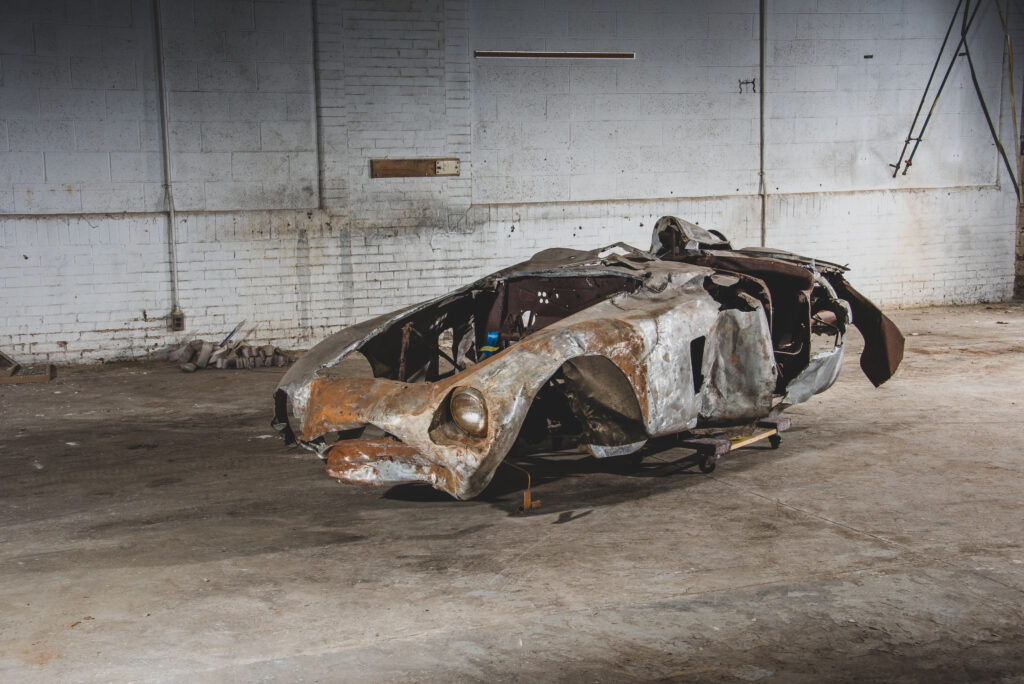
The 500 Mondial hails from the company’s early days of sports car racing success in the 1950s, and though everybody loves the roar of a V-12 Ferrari, the bark of a four-cylinder Mondial or Monza took plenty of checkered flags. Designed for Grand Prix racing by Aurelio Lampredi, Ferrari’s first four-cylinder engine powered the 500 F2 to World Championships in 1952 and 1953. Then, Ferrari fitted a detuned version of the alloy four into a sports car, called it the 500 Mondial (meaning “world” or “global”), and offered it to customers. Just 13 of these spiders were originally built by Pinin Farina.
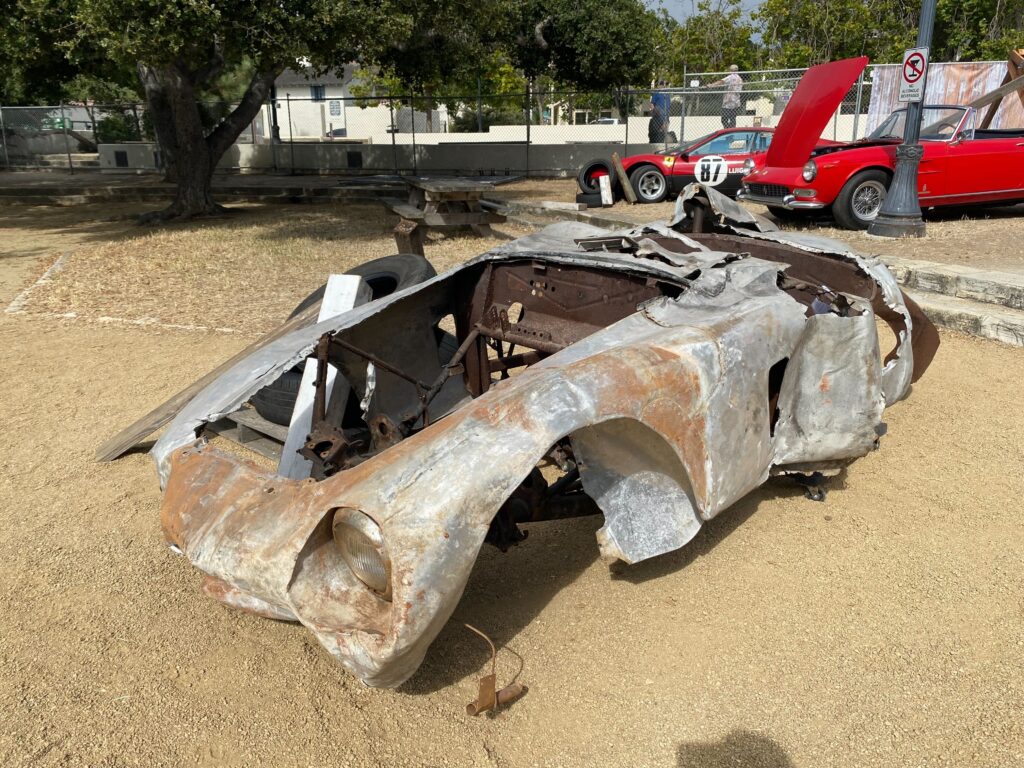
This Mondial, Chassis 0506, is reportedly the second one. Sold new to a Milan-based dealer, it was driven by Franco Cortese (who had driven the first Ferrari to the company’s first victory in 1947) to second in class at the 1954 Coppa della Italiana. He drove it again to a fourth in class and 14th overall at the Mille Miglia, and after being rebodied by Scaglietti it finished eigth at Imola. More races at Imola, Oulton Park, Monza and the Targa Florio followed, and by 1958 it had sold on to America, where it racked up some West Coast race appearances. By 1963 the Lampredi four-banger had been replaced by an American V-8 of unknown origin (it was just a cheap old race car at this point, remember) and then at an unknown time it crashed and suffered fire damage. Must have been some shunt, by the looks of it. After passing through a few owners, it sold to Florida real estate developer Walter Medlin in 1978.
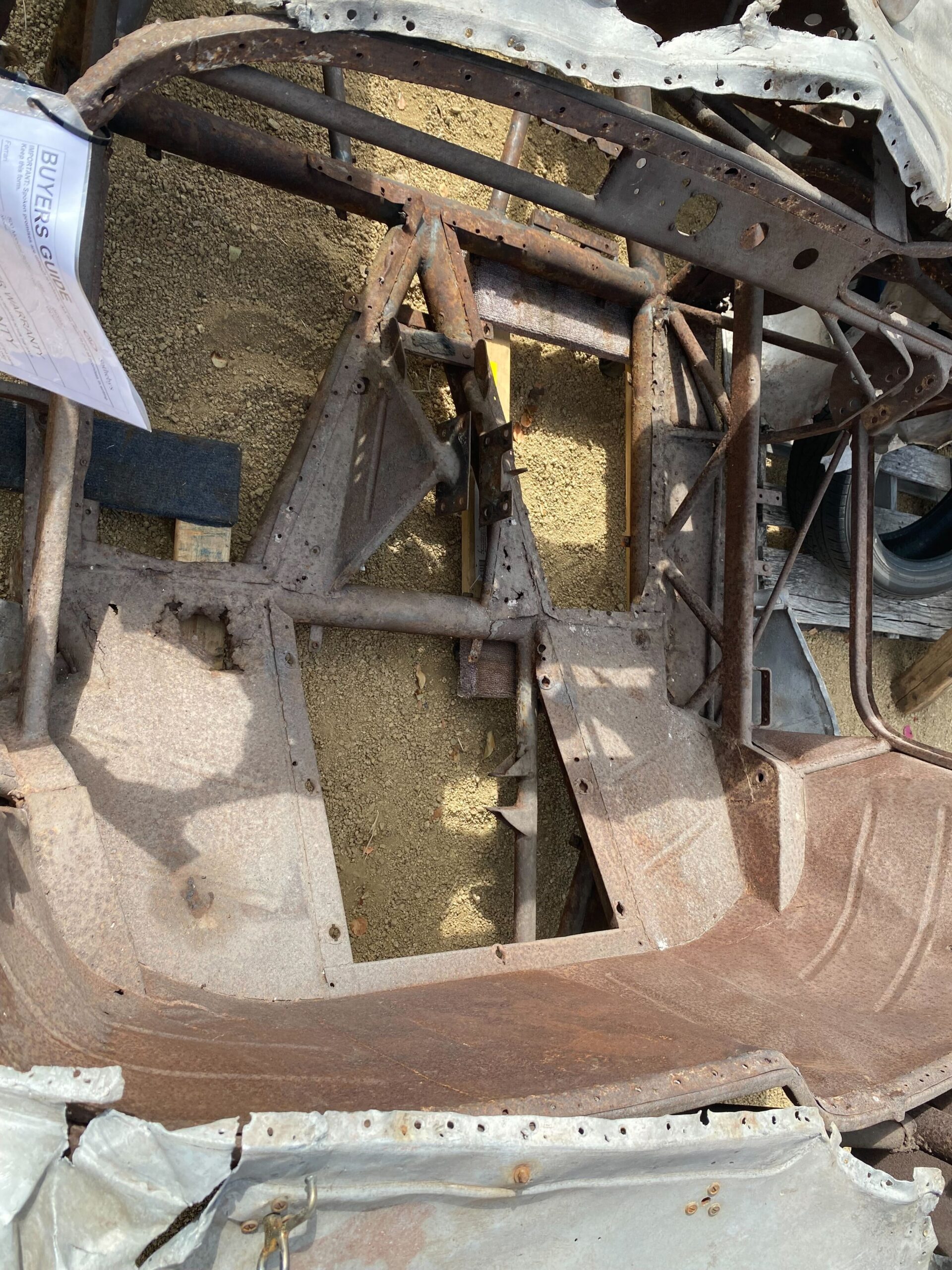
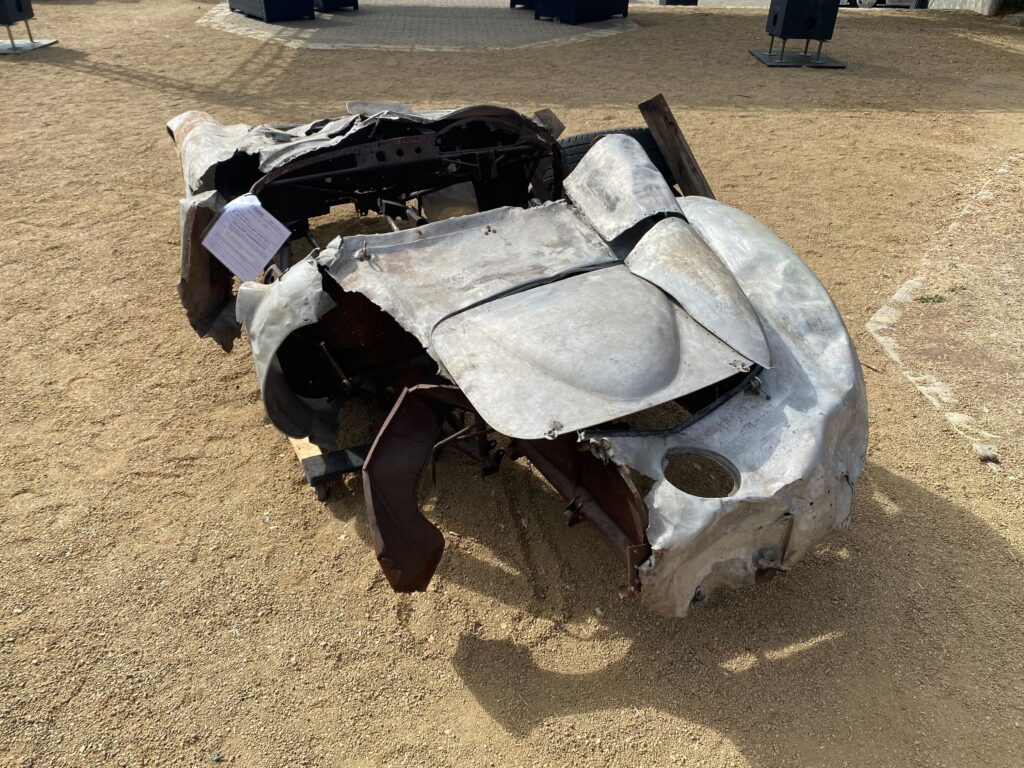
Which brings us to the twenty-first century. In 2004, Hurricane Charley gave Florida a Category 4-sized smack and caused $16.9B in damage. Among the casualties was the barn housing Medlin’s 20 Ferraris (including the Mondial), which collapsed and rained debris down on the cars. Later relocated to Indiana and stored for another decade, the cars were finally brought out for sale in Monterey, arranged in a sort of diorama-like “as found” display during the preview, and given an appropriately fancy, auction catalogue-y name: “The Lost & Found Collection.”
The group also included a 1956 410 Superamerica (sold for $2.8M) with missing trim, no steering wheel, and exhaust dragging the ground as well as an alloy-bodied 275 GTB (sold for $3.3M) with great history but a ghastly appearance. There was also a 365 GT 2+2 (sold for $118K) with the roof caved in, and a 308 GTB Vetroresina (sold for $78,400) with a busted windshield. But compared to the 500 Mondial, they all looked showroom fresh.

Aside from the mangled bodywork and frame, the Mondial comes with its factory-issued chassis plate as well as rear-axle corners, matching numbers 5-speed gearbox, a 3.0-liter four-cylinder engine sourced from a similar 750 Monza, and a long future of shop bills.
That last one isn’t explicitly spelled out, but the people bidding on a $2M car aren’t stupid. They know a seven-figure restoration is the next step. And maybe there’s something reassuring about starting from the bottom.
“I know it sounds crazy, but this Mondial represents the ultimate blank slate,” says Kinney. “You’re buying a wadded-up pile of parts, so there can be no surprises. No panic about missing parts, because, frankly, most of them are. What about prior damage after taking the car apart? Not a problem here, it’s all damaged.” As for the restoration, it’s certainly not something an owner can tackle with his buddies on weekends, but it’s still a relatively simple decision. “Take it to Ferrari for a full factory restoration or have any one of perhaps 25 name-brand shops restore it. There can be no corner-cutting, no ‘I got a friend in Des Moines who can get you a deal on chrome.’” As they say, all it takes is money. “Remarkably similar to the price paid at the auction” is Kinney’s guess.
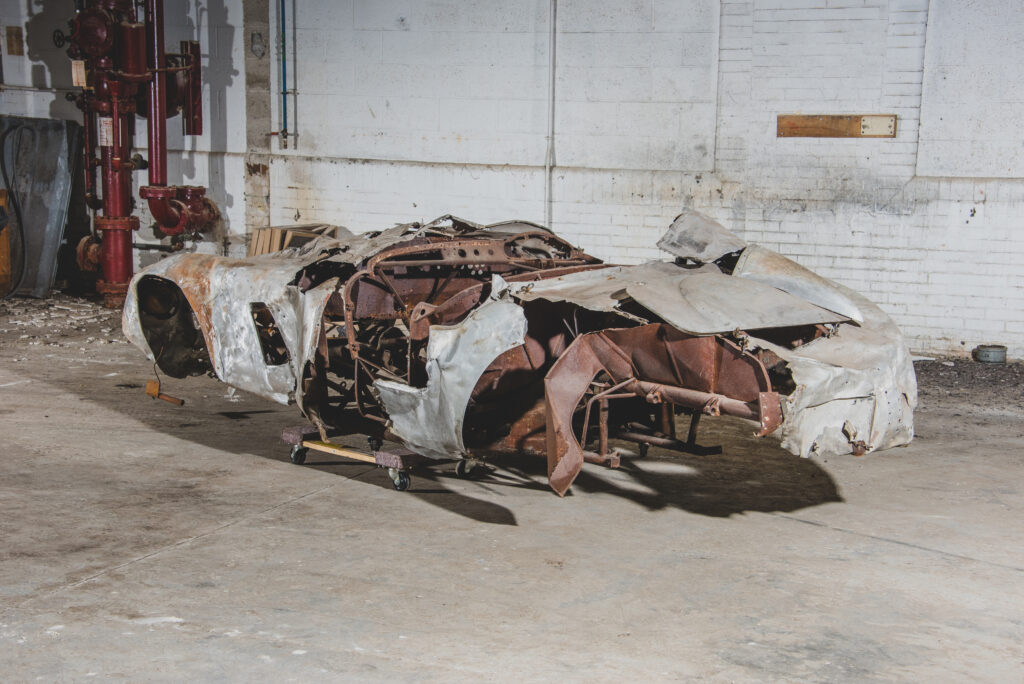
What’ll it be worth when it’s done? Well, old race car prices can vary widely depending on history and originality, but 500 Mondials have sold before. One sold here last year for $2.1M, and that was a running and driving race winner. However, another one brought €3,717,500 ($4,162,485) in 2019, and in 2018 two others brought $5,005,000 and $4,455,000, respectively.
It will also be eligible for top-level events like the Mille Miglia, and probably any concours up to and including Pebble Beach. That’ll be one hell of a before and after photo.
Report by Andrew Newton for hagerty.com



